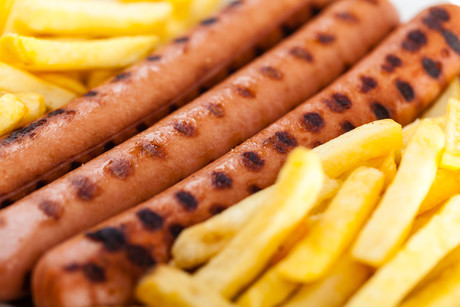How hot are your sausages?

This isn’t a silly question. Sausages that are safe to eat must have a core temperature above 72°C, but if the temperature exceeds 78°C, they lose more water than necessary, become less juicy and profitability decreases.
Researchers from Nofima and Sintef Digital in Norway are developing a new sensor to make sure that sausages are cooked at just the right temperature.
Begun in 2016, the SmartSensor project is a three-year project to develop an instrument that can rapidly take key measurements of food in the production line.
"This type of instrument will be of great value to food manufacturers because better control will make it easier to handle variable quality of raw materials, which will reduce waste. We have now completed the development of Prototype version 2, which is currently being tested in companies,” said Jens Petter Wold, senior researcher at Nofima and project manager.
Better control = boost to profitability
For Nortura, the main point is better control of the core temperature in hot dog sausages.
Today, core temperatures are measured by sampling when necessary. But the new prototype continuously measures and adjusts the temperature if it is not on target.
"Measuring the core temperature of each sausage as they pass through the oven has been both challenging and enjoyable. Water vapour, humidity, little space and the fact that we couldn’t see the sausages we were measuring made this quite a job. But we solved many of the problems through close cooperation between Nortura, Nofima and Sintef,” said Sintef researcher Marion O'Farrell.
Not just sausages
The technology is not only suited to sausages — it can also be used to bake the perfect chip. Findus wanted to be able to measure the water content of potatoes and potato strips during the production process. The amounts of dry matter and water vary enormously among potatoes.
Potatoes with too little dry matter can be removed and used for other products, and the frying process can be adjusted optimally in terms of the water content of the potato strips, resulting in deliciously crisp chips and French fries. The scientists have been able to accurately measure the dry matter in each potato in the lab and have now obtained very promising results from process measurements as well.
In addition, the salmon producer Cermaq wanted to find out whether the technology can be used to measure the quality of whole salmon. This will enable better production management at the individual level and make production more customer-friendly.
Further advances
The technology in the prototype is based on the use of near-infrared spectroscopy (NIR). The prototype is unique in its capability to measure extremely quickly, and at the same time to take measurements from deep inside the food item. For example, it can measure beneath salmon skin, without contact with the food.
"We have previously developed rapid measuring instruments for use on production lines, but these were unable to penetrate deep enough into products with dark surfaces like salmon and potato skin. We have developed instruments that can penetrate dark surfaces, but these needed to have contact with the food and were therefore unsuitable for measurements in the production line. In this project, we are working towards combining both of these desirable effects, and this will save food manufacturers a lot of money,” said Wold.
The three companies involved in the project have calculated that the use of an effective instrument can lead to considerable annual savings, based on better yields, consistent product quality, less waste and added value in the market.
“Today we have a promising prototype, and we believe and hope that this will eventually become a commercial product. TOMRA is the technology supplier and the instrument is based on some of their technology. We hope the results will be so good that TOMRA will commercialise it to the benefit of the food industry,” concluded Wold.
Six beverage trends predicted for 2026
Demand for customisation, 'protein-ification' and sustainable storytelling are some of...
Making UHT processing less intensive on energy
A nutritional beverages company was seeking a more sustainable way to produce UHT beverages using...
Tasty twist for chocolate alternatives
Food scientists develop two novel flavour-boosting techniques to transform carob pulp into a...








